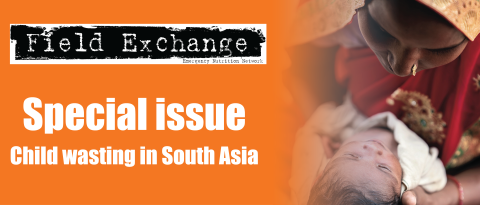Aiming higher for maternal and child nutrition in South Asia
Research snapshot1
South Asia has the greatest burden of wasted and stunted children of any region in the world. These children are more likely to experience ill health and developmental deficits in childhood and lower productivity and poorer livelihoods as adults. This article introduces and summarises the findings of a special supplement on ‘Height Heights: A Greater Ambition for Maternal and Child Nutrition in South Asia’, which brings together 15 articles on the time trends, distribution and determinants of maternal and child malnutrition and the effectiveness of policy and programme actions to increase the coverage of essential nutrition actions in South Asia.
The articles highlight the role of socioeconomic disadvantage, poor maternal nutrition and poor diets in early life in driving the high prevalence of both wasting and stunting in South Asia. Poor maternal nutrition (low body mass index and short stature) and low birth weight (LBW) are consistent predictors of stunting and wasting. Programme approaches that have proven effective in improving the coverage of nutrition interventions during pregnancy have several common features: use of formative research to inform programme design; service delivery at community level; the engagement of family members; actions to improve the performance of frontline health providers; and the provision of free iron and folic acid supplements.
Optimal infant and young child feeding practices appear to protect against wasting and stunting. The rapid fall in the prevalence of wasting during the first six months of life in several South Asia countries suggests that early and exclusive breastfeeding may help infants to recover from low weight at birth. Programmes and interventions that reach women and their families with repeated exposure early in pregnancy are more likely to improve early and exclusive breastfeeding, while interventions with no impact on breastfeeding are characterised by short duration, irregular frequency, inappropriate timing and poor coverage and targeting. The likelihood of stunting is lower in children aged 6-8 months who are fed complementary foods and in children aged 6-23 month who consume diverse diets.
The authors conclude that a coordinated approach involving the food, health and social protection systems is needed to improve the diets of women and children in early life, alongside actions to increase girls’ access education and safe water and sanitation services.
1 Torlesse, H. & Aguayo, V. M. (2018). Aiming higher for maternal and child nutrition in South Asia. Maternal & Child Nutrition, 14(S4):e12739 https://doi.org/10.1111/mcn.12739


